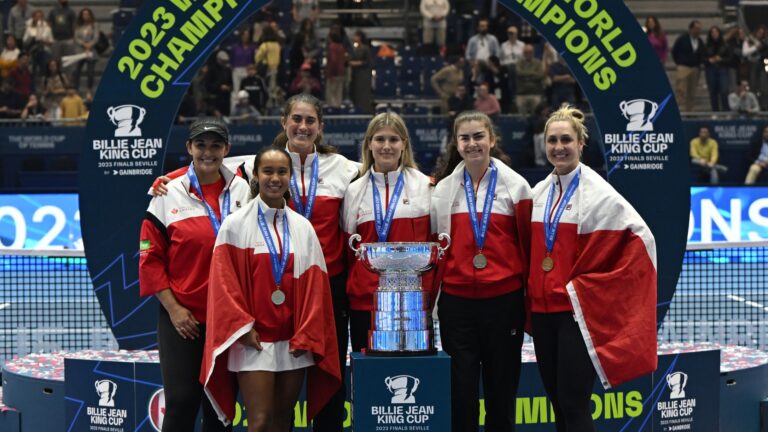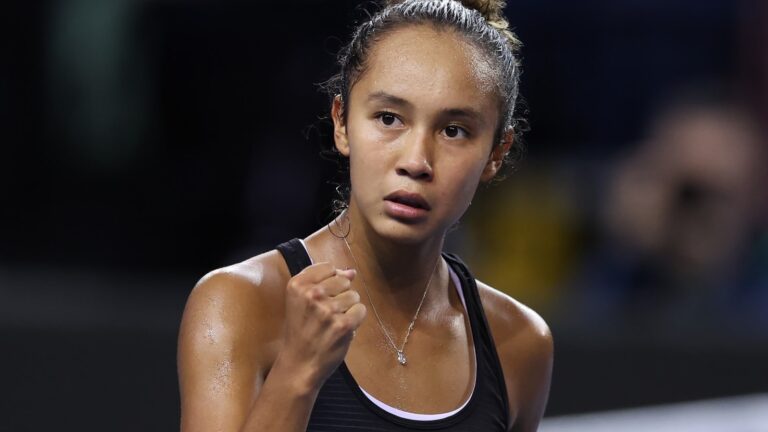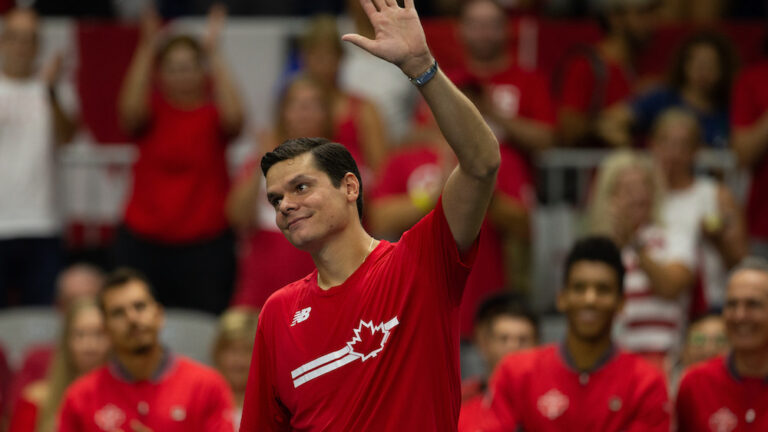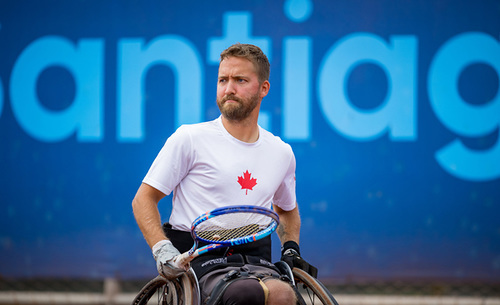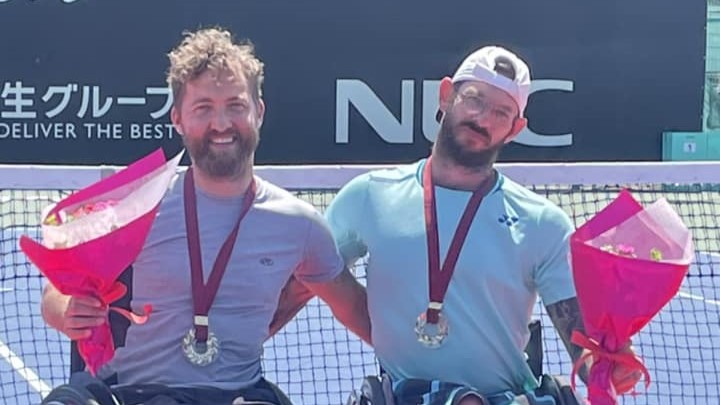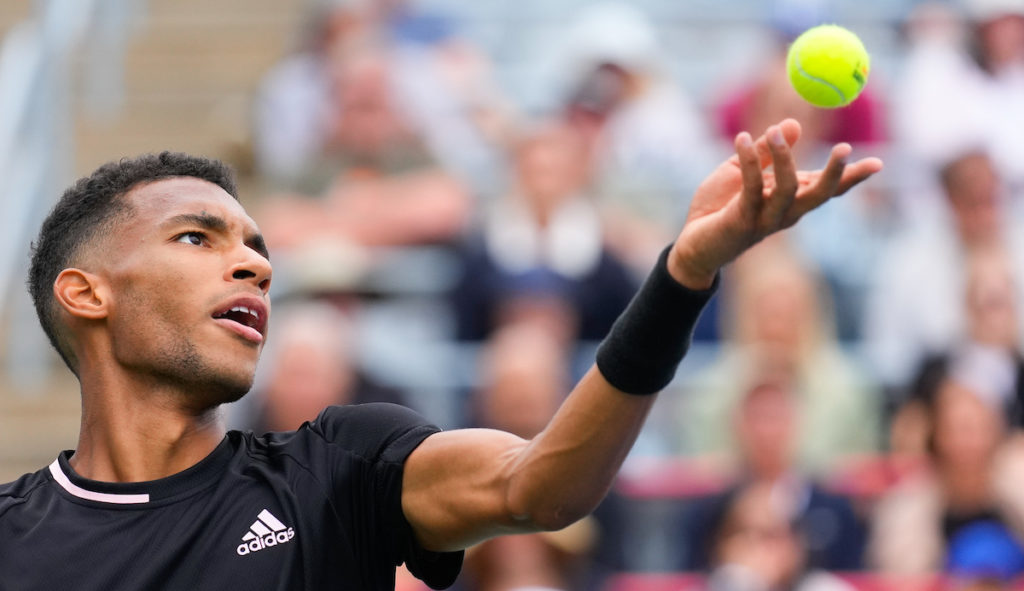
Photo : Mathieu Belanger/Tennis Canada
He was slow to win his first title, but now, he can’t get enough.
After falling short in his first eight attempts in an ATP final, Félix has raised three winner’s trophies in four tries this season, including two crowns in the past eight days.
He’s definitely gotten the hang of it.
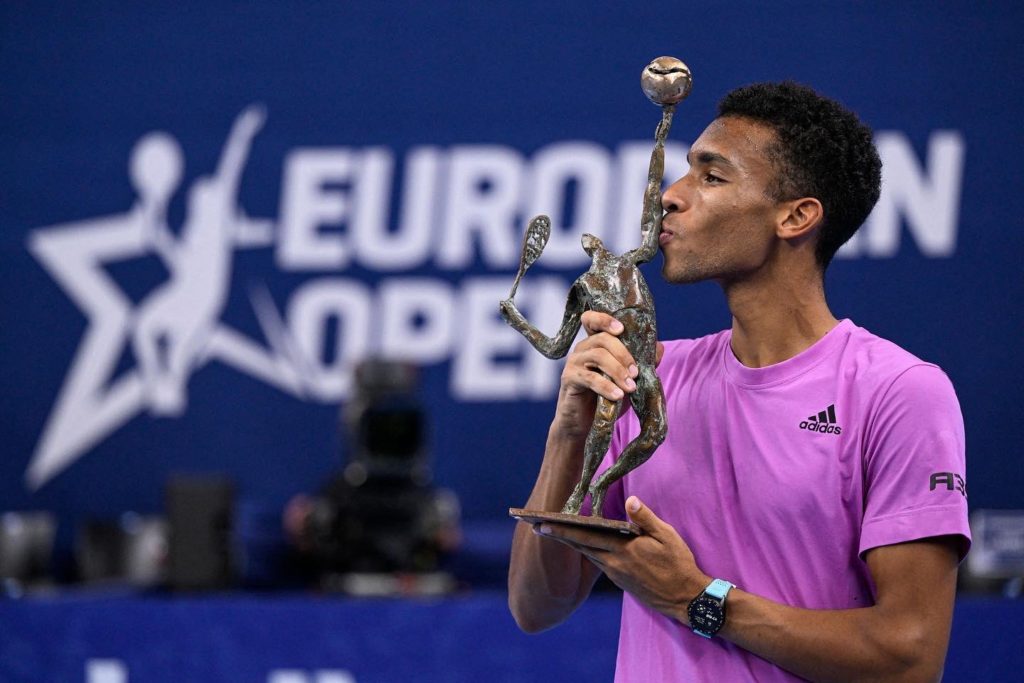
His potential was never in doubt. He found his way to the Top 10 fairly quickly but couldn’t take that extra step into the Top 5 or Top 3. He was missing one thing.
Two things, actually.
- Power, first. Physically speaking, he has everything it takes, but he needed to get a bit older and bit bulkier and develop a solid technique to get the most out of his natural talents.
- Confidence, more than anything. It can’t be overstated how critical confidence is in. With so many athletes vying for elite status, mindset can make a huge difference.
First things first: consider the power that inevitably materializes on his serve. And not just the power, the accuracy, too.
On October 24, Félix woke up at no.2 on the ATP’s list of ace leaders this season.
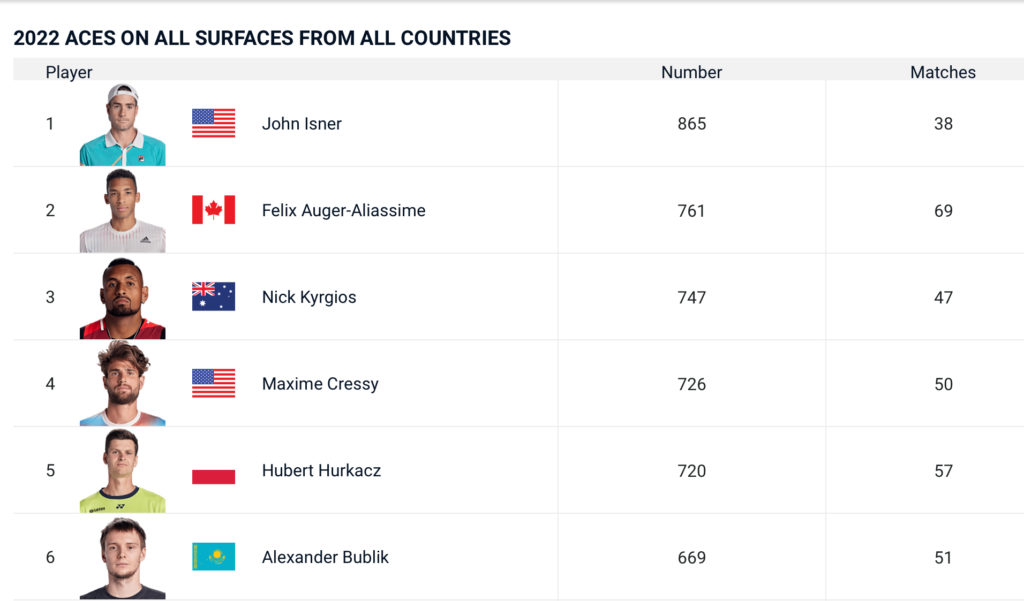
With over 70 matches played (that also make him second in the ATP, this time after Stefanos Tsitsipas), Auger-Aliassime is a testament to staying consistent and injury free. His match average isn’t as spectacular as Isner’s or Kyrgios’, but 11 aces are enough to keep him among the ten best in men’s tennis.
At 22 years and 2 months old, he’s competed in 12 finals: 3 in 2019 and 2020, 2 in 2021 and 4 in 2022.
Also of note is the fact that he’s made it to the final of back-to-back tournaments four times. Those successive successes are showing benefit.

At his two most recent indoor events, Félix hit 88 aces in 88 service games. I’ll let you figure out his average per game.
The stats on his first serve are just as impressive.
In his eight matches in Florence and Antwerp, his first serve percentage was 67.6%. How effective was his serve? It secured a point 82.1% of the time. As far as his second serve, it was 58% at both tournaments combined.
Better still: in his last eight matches, he gave his rivals only peanuts: 16 break points in 88 service games. He was only broken five times.
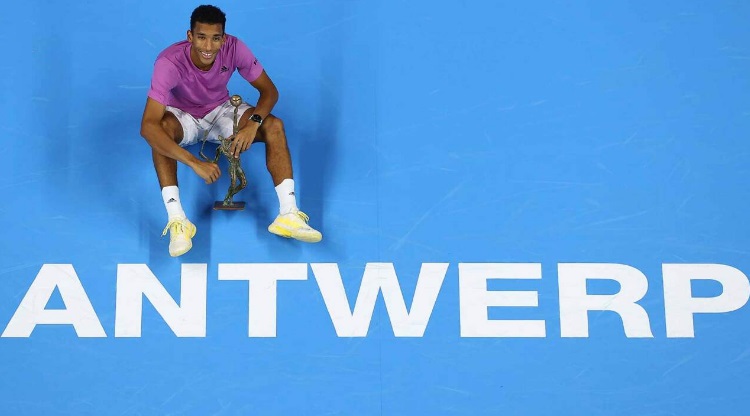
What else is there to say other than he’s powerful, accurate and consistent in a critical aspect of the game? And even though he outmaneuvered players who aren’t in the Top 20 (between No.26 and No.148), the positive effect of all his wins is undeniable. Because you have to defeat everyone in your way before you can start conquering your equals and moving on to the best of the best.
He’s powerful, he’s confident and he’s a perfectionist, I might add.
A short sequence at the tail end of the final in Antwerp says it all.
Félix looks pretty unhappy, but he’s actually just secured a break in the second for the 4-2 lead that would give him the win.
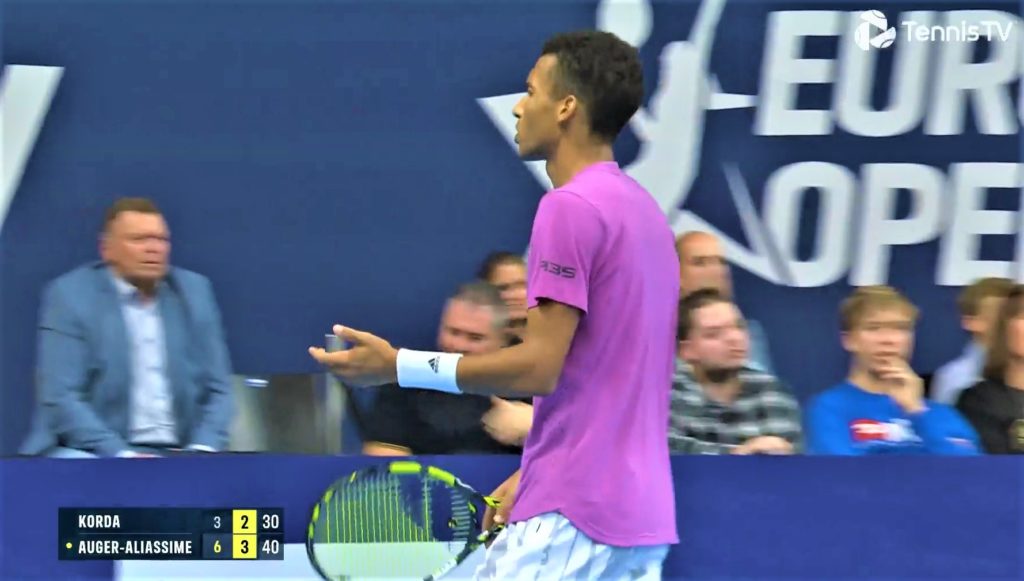
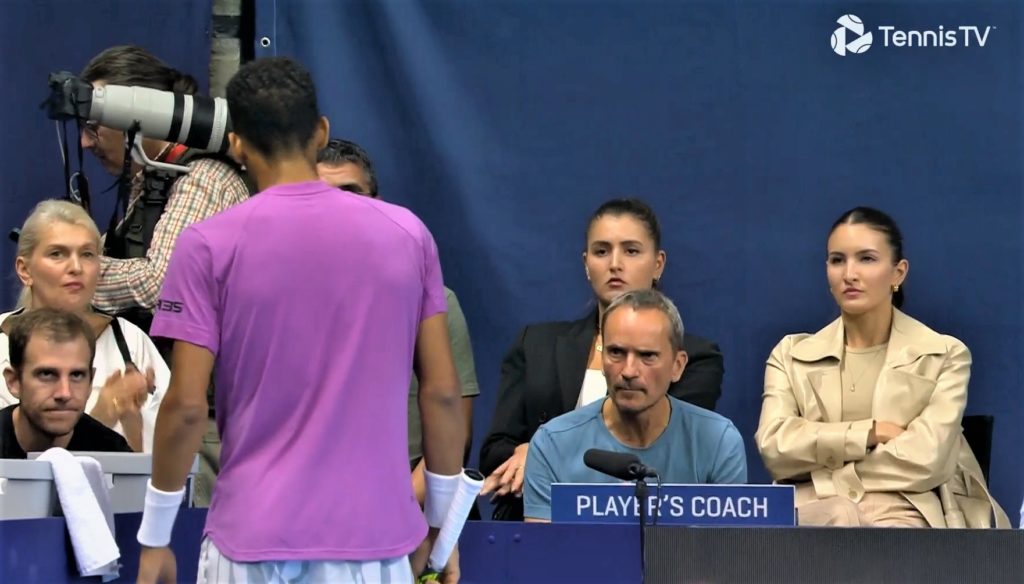
But he wasn’t entirely satisfied with his serve (yes, really). The concerned but still protective and comforting look on coach Frédéric Fontang’s was probably meant to communicate something along the lines of don’t worry about it, stay focused on your game. And you must admit it’s a great game.
There’s one last thing: the drop shots. Correction: his drop shots.
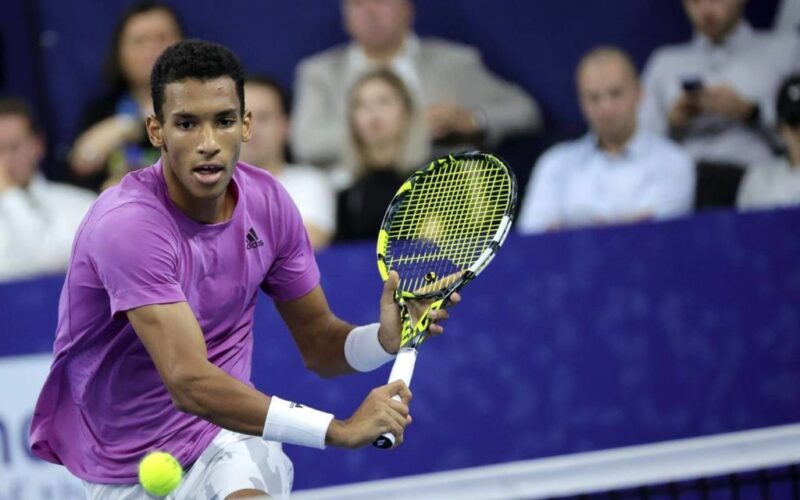
After using the strategy sparingly throughout his career and in 2022 in particular, Félix has made drop shots an integral part of his game. And it’s paying off.
In his last two matches in Antwerp, he won several points at Richard Gasquet’s and Sebastian Korda’s expense. While the French veteran can’t match the explosive athleticism of a lot of the young competitors, 21-year-old Sebastian Korda certainly can and still came up with nothing.
Let’s not forget: a drop shot isn’t meant to close things out quickly. It puts the hitter on the attack. When it doesn’t immediately yield a point, it runs an opponent down and provides an edge as the match progresses.
Still, if he wants to spend a week in Turin, Félix has his work cut out for him at his last two indoor events: the ATP 500 in Basel and Masters 1000 in Paris.
Even if he ends up elsewhere, 2022 has been a great season. Mission accomplished.
On October 24, Maclean’s published this great read:
“The rise of Félix Auger-Aliassime”.
Take a look. There are never enough stories and anecdotes about him.
WTA Finals: youth and experience
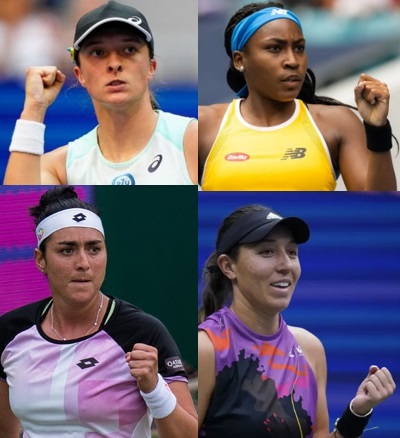
The roster for the WTA Finals was decided a lot quicker than the one heading to the Nitto ATP Finals.
After the Guadalajara Open Akron, the field of eight jetting to Fort Worth, Texas, was settled. The event, which gets rolling on October 31, promises to be an interesting mix of youth and experience, raw talent and exemplary perseverance.
Youth is embodied by 21-year-old World No.1 Iga Swiatek, of course. And also and especially by 18-year-old Coco Gauff.
At the other end of the spectrum are two 28-year-olds. Ons Jabeur and Jessica Pegula qualified second and third. Good things really do come to those who wait.
And that’s the beauty of tennis.
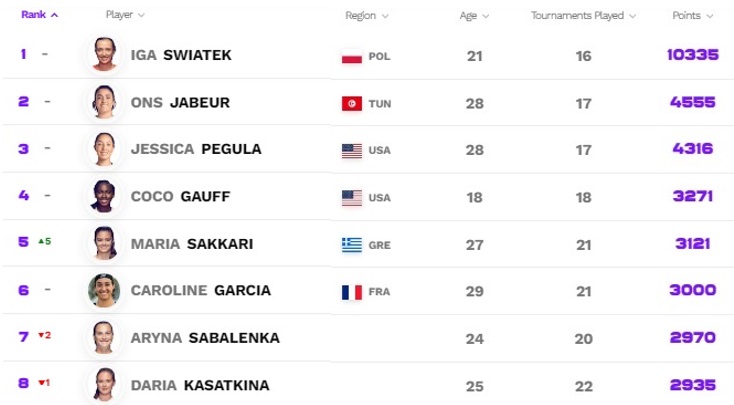
Certain players, like Gauff, emerge as possible contenders early on, sometimes as young as 14 or 15 years old. For others, the ascent is more gradual. The keywords for them are patience, resilience and confidence.
In 2013, at the age of 19, Jessica Pegula got to No.123 but then started to plummet. It took her five years to get back in 2018 and four more to float up into the Top 10.
Also in 2013, also at the age of 19, Ons Jabeur was No.139. She moved into the Top 100 in 2018, the Top 20 three years later and the Top 10 a few months later.
Next week, they’ll take on Swiatek and Gauff along with Maria Sakkari, Caroline Garcia, Aryna Sabalenka and Daria Kasatkina.
I should add that the phenomenal Coco Gauff will also compete in doubles with fellow American Jessica Pegula.
It looks like it’s going to be a big week in a big season for them.

As a team, they found their way to five finals and took home three winners’ trophies, including the National Bank Open in Toronto last August. In singles, Pegula won one of two finals, and Gauff lost her only final this season (but what a final!) to Iga Swiatek at Roland-Garros.
Will it be Gaby’s year?
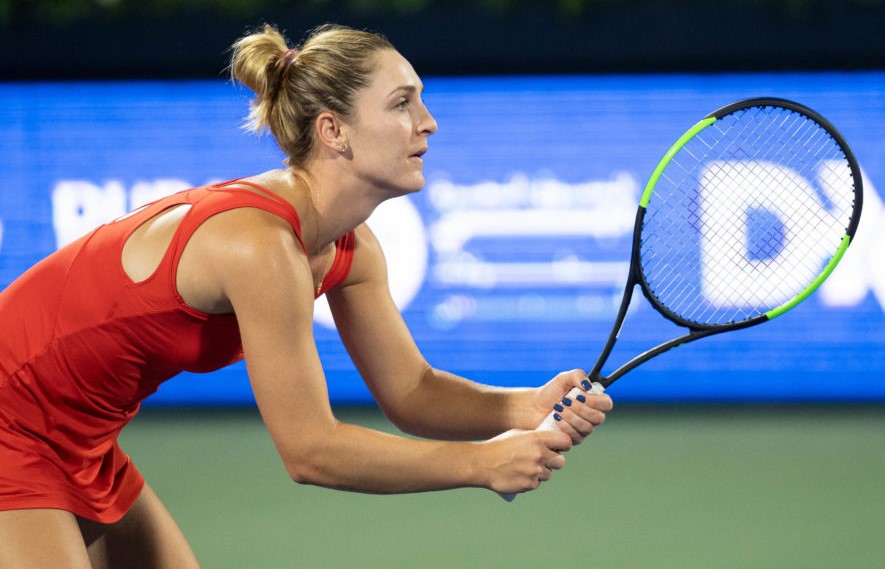
Since we’re on the topic of the WTA Finals’ doubles draw, I’d be remiss if I didn’t mention our very own Gabriela Dabrowski. She and Giuliana Olmos are second in the race.
Dabrowski earned three titles in 2022: two with Olmos and one with Luisa Stefani, who was her partner in 2021. With Olmos, the Canadian battled in three quarterfinals, four semifinals and four finals (plus a fifth with Stefani).
All that success carried her up to World No.6 in doubles.
How could we not wish her every success in Fort Worth?
Standing up for Simona
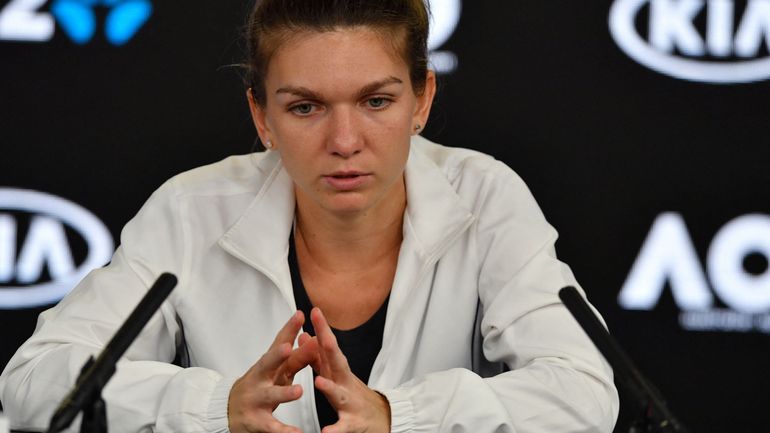
There are large Romanian communities in Montréal and Toronto. Just as there are in countless cities around the world judging by all the blue, yellow and red flags that fly when 31-year-old Simona Halep is in town.
The jovial Sergiu Turcanu, a cameraperson I worked with at quite a few National Bank Open tournaments, always tried to get me to correctly pronounce multumesc, which means thanks in his native Romanian. At the National Tennis Centre in Montréal, I often run into Mira Teodorescu, an affable coach who’s preparing Canada’s next gen.
Two people who are devoted to their tennis idol.
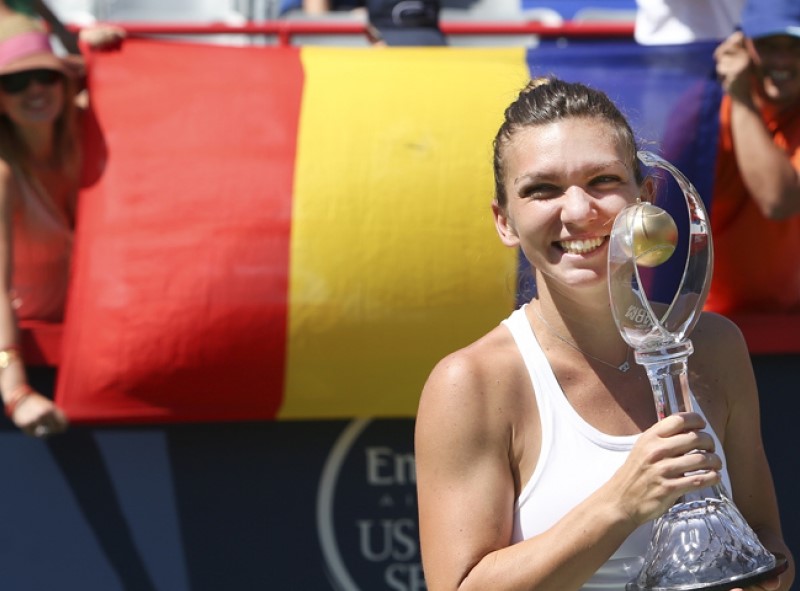
So, you can imagine how hard the news hit on October 21.
Halep suspended for doping.
Simona?!
No!
Yes.
Under the World Anti-Doping Code, she faces a ban for a positive test for roxadustat, which increases the production erythropoletin or EPO.
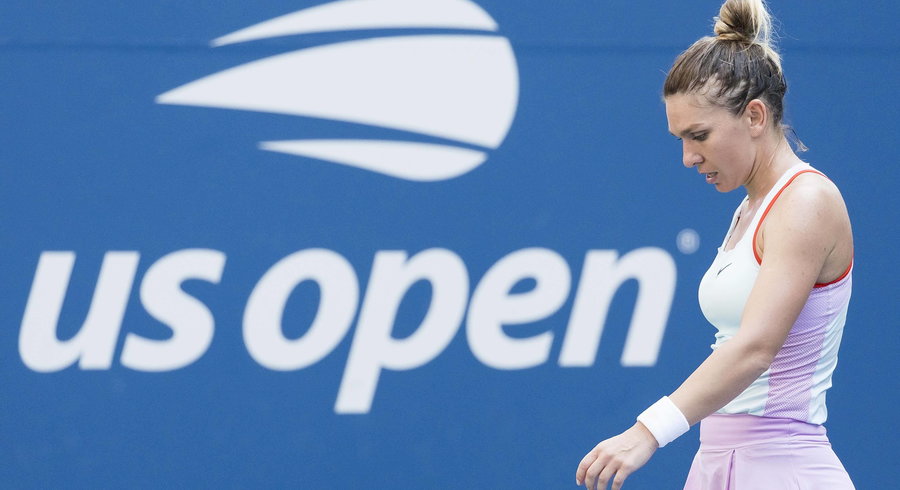
Of course, the current No.10 shared a message on social media, vowing to prove her innocence.
“Throughout my whole career, the idea of cheating never even crossed my mind once, as it is totally against all the values I have been educated with. Facing such an unfair situation, I feel completely confused and betrayed. I will fight until the end to prove that I never knowingly took any prohibited substance. (…) It’s not about the titles or the money. It’s about honor and the love story I have developed with the game of tennis over the last 25 years.”
Patrick Mouratoglou, her coach since last April, immediately voiced his support. As did Alizé Cornet and the Professional Tennis Players’ Association founded by Novak Djokovic.
And so did Darren Cahill, who coached her for years, all the way to World No.1. “Firstly, and most importantly, there is NO chance Simona knowingly or purposely took any substance on the banned list. None. Zero,” he wrote on Instagram. “She is an athlete that stressed about anything prescribed to her by a medical professional (which was rarely), or about any supplement that she used or considered. Simona wore out the words ‘Please double check this, triple check this to make sure it’s legal, safe and permitted. If you are not sure, I’m not taking it.’”
We won’t know the final outcome for weeks, maybe even months.
In the meantime, I’ll rely on the principle that any person accused is innocent until proven guilty.
Email: privard@tenniscanada.com
Twitter: @paul6rivard
Follow all our Canadians in action here.
